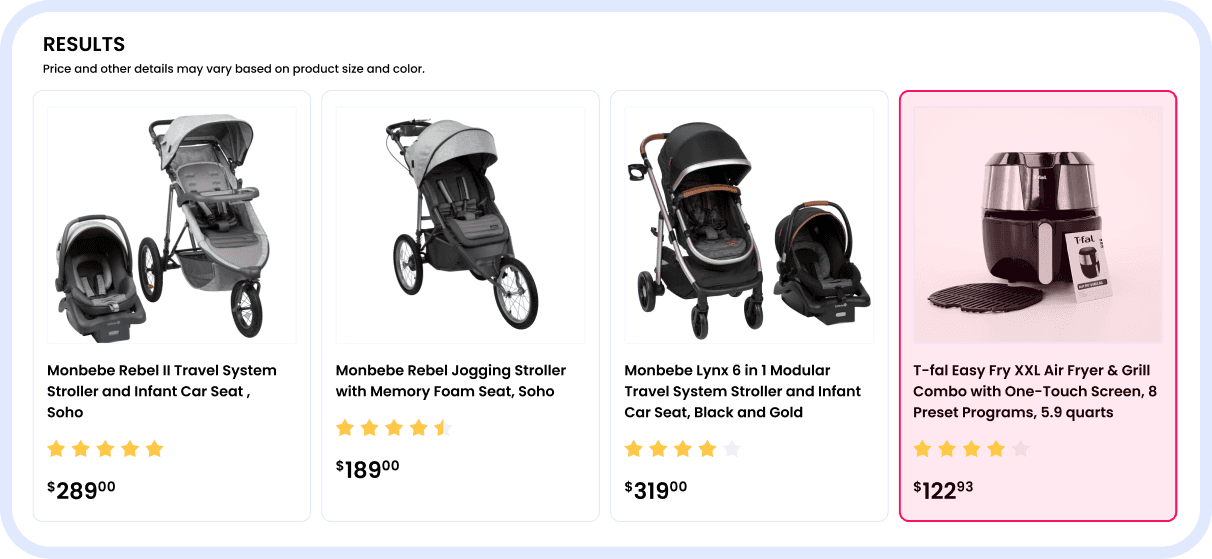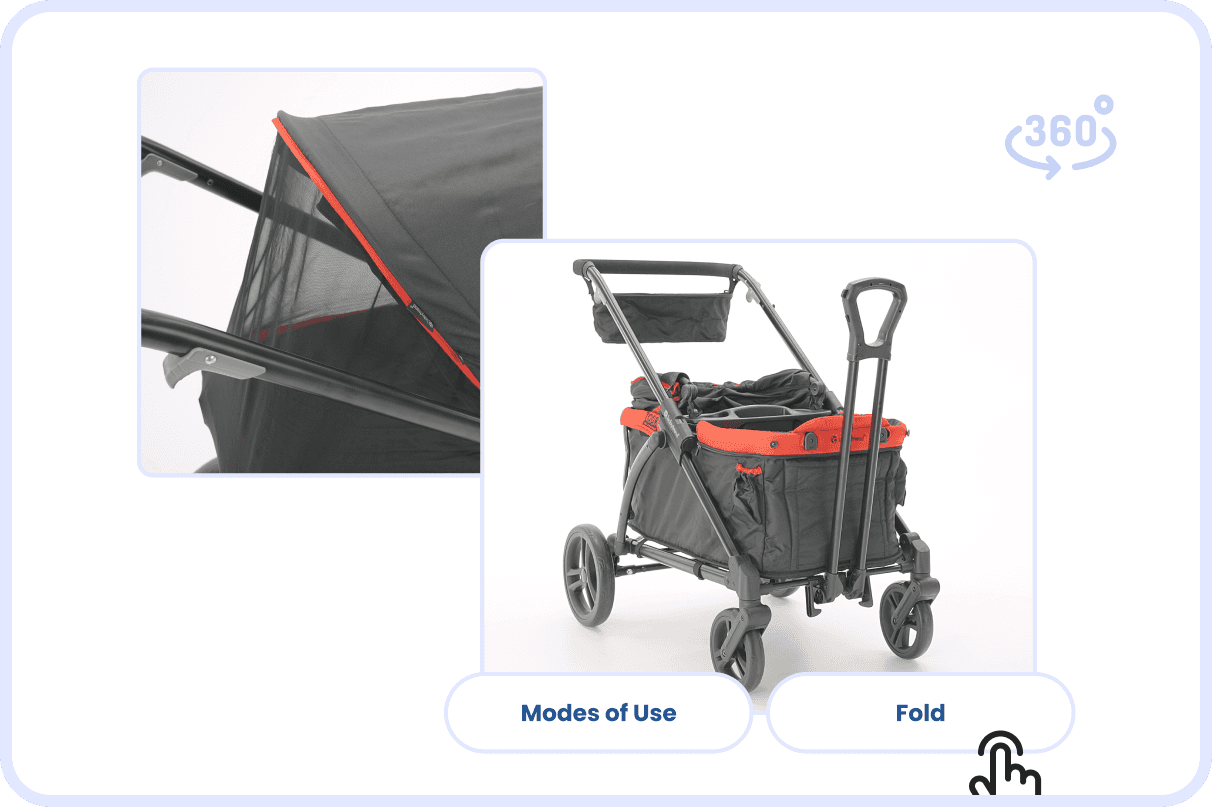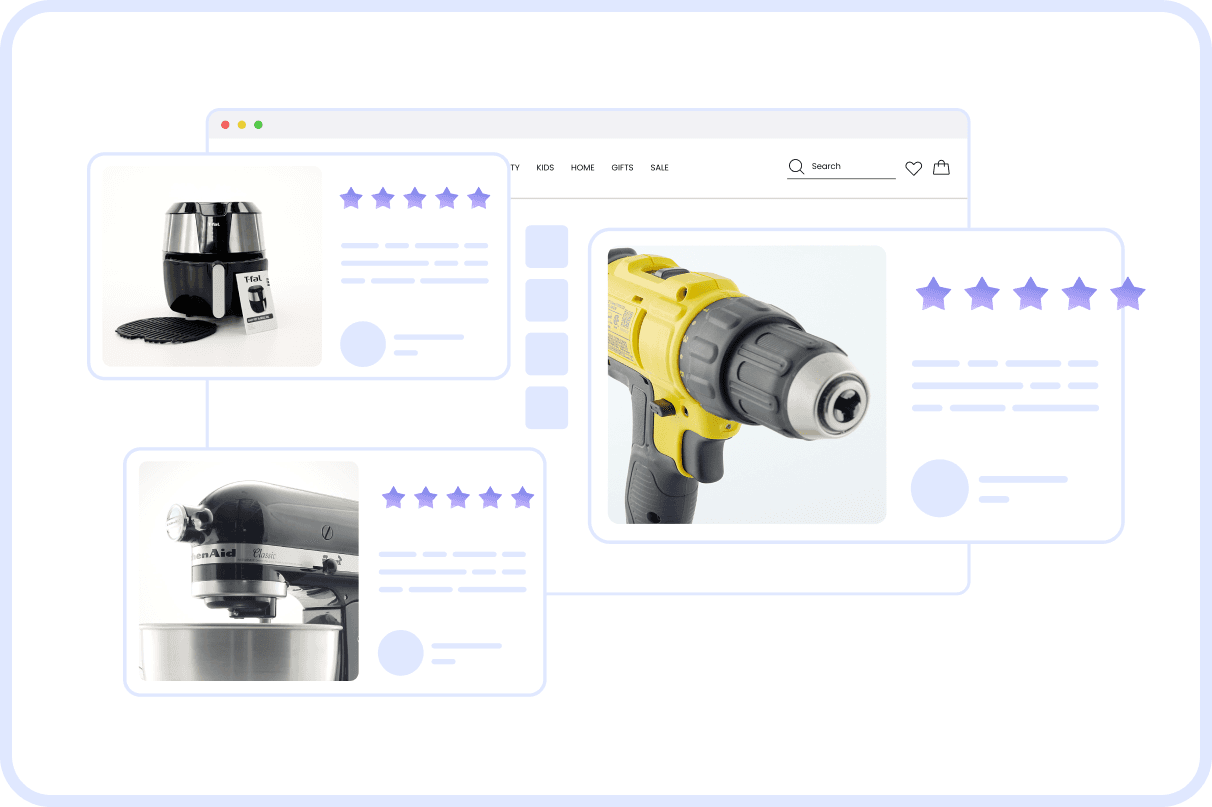9 Steps to Optimize Your Marketplace Product Listings
Written by:
Amit Gutin
Aug 15, 2023
5 min Read

In today's digital age, omnichannel marketing is key. It's not just about listing your products, but optimizing them across multiple platforms like Walmart, Amazon, Etsy, and eBay. This strategy ensures a consistent brand experience, enhances visibility, and ultimately drives sales.
If you're looking to optimize your product listings across various platforms, you've come to the right place. Below, we’ll share strategic insights and tactics that can help you navigate these competitive online spaces effectively.
How Marketplaces Determine Listing Positions
Grasping how marketplaces operate is an important initial step. Once a marketplace identifies listings that align with a buyer's search, it uses several factors to determine the ranking of these listings. These ranking factors include:
Relevancy: The match between the listing and the buyer's search.
Listing Quality Score: The comprehensiveness and quality of the listing.
Recency: How recent the listing is.
Customer and Market Experience Score: Seller's reputation and performance.
Shipping Price: The competitiveness of the shipping cost.
Translations and Languages: Availability of the listing in the buyer's language.
Shoppers’ Habits: Buyer's purchase history and browsing habits.
Choosing the Optimal Marketplaces for Your Business
While hundreds of thousands of eCommerce businesses have chosen Amazon as their main selling platform, it doesn't automatically make it the right choice for every business. Despite the immense opportunities offered by this eCommerce behemoth, it's worth noting that their seller fees are relatively high compared to other marketplaces. Additionally, the level of competition on this platform is quite intense.
We encourage eCommerce businesses to expand their selling opportunities beyond Amazon by exploring various marketplaces like Walmart, Etsy, and eBay, which can offer less competition and potentially better margins.
Tailoring Your Product Listings to Suit Each Marketplace
After determining the platforms to feature your products, consider each as an extension of your own eCommerce store, presenting your brand and products in a manner that aligns with your vision. Keep in mind, though, that a universal approach won't work. Each platform is unique and may necessitate tailored information for product listings. Be mindful of the specific stipulations of each platform.
Select the Right Category
Ensure you always select the most precise and specific product categories. Your choices in predefined fields matter as they guide customers to your products during their search across different marketplaces. Being miscategorized can lead to missed opportunities with potential buyers.
For instance, if a customer is searching for a stainless steel toaster on Walmart, and your stainless steel blender appears in their search results due to it being miscategorized, you're missing the opportunity to reach the customers who are actually in the market for your blender.

Trial and Refine Product Titles: Customizing for Specific Searches
Product titles are paramount in any marketplace, as they're often the first detail potential buyers see and can influence their decision to engage further. It's crucial to optimize these titles for search within each platform, whether it's Amazon, Google, or Etsy, each having its own SEO and ranking rules. This may involve identifying effective keywords and adjusting titles accordingly through testing and experimentation. Key elements to include in the title could be the brand name, product model, and other useful details like size and color. Remember, crafting a title is more art than science, and it requires a balance between brevity and effectiveness.
Prioritize Key Elements in Your Product Descriptions
Aim to craft product descriptions that truly speak to your buyers. Include value statements, answer potential questions, and if possible, use both bullet points and paragraphs. Highlight key uses and keywords to boost search visibility, all while keeping it a bit witty!
Use High-Quality Photos, Videos, and Rich Media
Marketplaces typically have a limit on the number of images you can use, so make the most of it with high-quality product visuals. Your best photo should be your main image, while secondary images should cover all aspects of your product.
If the marketplace allows, consider using rich media such as 360° photos/videos and short videos. These not only reinforce your brand value but also help customers make decisions by showing exactly how a product is used.
Don't underestimate the power of interactive videos. They can provide an authentic and educational experience, delivering immense value to your audience by offering a deep dive into the product's functionality.

Embrace User-Generated Content
Integrating User-Generated Content (UGC), like customer-created unboxing or product demonstration videos, into your listings can bring an authentic touch and emphasize your product's benefits. If such content isn't available yet, think about launching a program that encourages your customers to create and share content featuring your products.

Effectively Manage Product Reviews
Product reviews are vital for merchants. While perfect ratings are the goal, a variety of reviews, including less favorable ones, can enhance your brand's credibility. The key is to never ignore any review. Responding to all feedback, addressing concerns, and acknowledging positive reviews are essential for effective review management. If you're handling multiple products across various marketplaces, consider using tools such as Bazaarvoice or Yotpo to streamline the review monitoring and management process.

Putting It All Together
Every element on a product listing page in a marketplace is interconnected, and missing any component can impact sales and rankings. Well-optimized product listings typically sell more, leading to better visibility within the marketplace. To further improve your product listing optimization strategies, consider eko's solutions, which are specifically designed to enhance your Product Detail Page (PDP).



